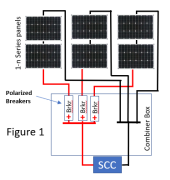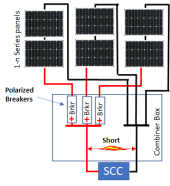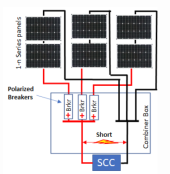Hedges
I See Electromagnetic Fields!
- Joined
- Mar 28, 2020
- Messages
- 20,522
If you unplugged two strings so you have 3s2p (6 panels), how much output do you get with one covered? 5 panels? 4? 3?
Bypass diodes are what's built in to the panels, as shown in FilterGuy's picture.
Maybe you meant blocking diode (in series with the panel). I don't think those are needed, at least not for this purpose.
Bypass diodes are what's built in to the panels, as shown in FilterGuy's picture.
Maybe you meant blocking diode (in series with the panel). I don't think those are needed, at least not for this purpose.







